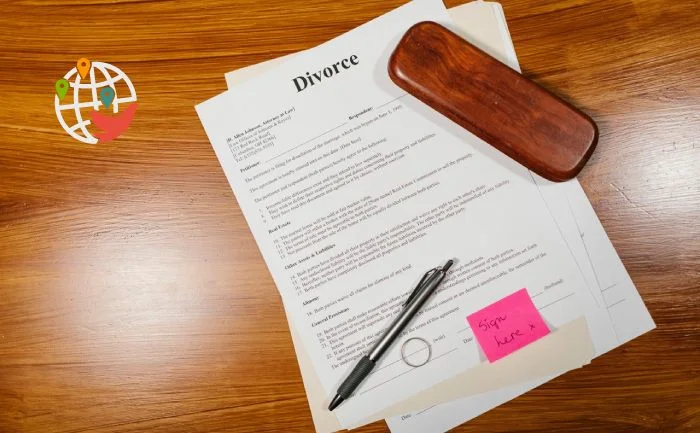How to divorce in a Canadian way

Why do Canadians get divorced, and how difficult is it to get a divorce?
There were 42,933 divorces in Canada in 2020, the lowest number since 1973. Pandemic restrictions and barriers to accessing court services contributed to the decline. Statistics Canada believes that the growing "selectivity of marriage" has also had an impact: more and more young people in Canada are choosing civil unions that do not require a documented divorce.
The decision to divorce is increasingly becoming mutual: statistics show that almost a third of applications are filed jointly. The average age of divorce is also steadily increasing: in 1980 it was 36.2 years, in 2020 it is about 46.
The average length of a marriage ending in divorce in Canada is 15.3 years.
According to 2016-2020 data, the highest divorce rate is in the Yukon (13 divorced couples per 1,000 marriages) and the lowest in Nunavut (only 2 per 1,000).
The most common reasons Canadians apply are:
- financial issues — 68% of respondents believe that a property conflict can be a reason for divorce;
- infidelity;
- domestic violence, physical and mental;
- lack of affection;
- irreconcilable personal differences.

Divorce in Canada is a legal process that couples who want to end their marriage must go through. Only married couples can obtain a divorce, and only a court has the authority to grant a divorce. At the end of this process, the court will issue you with a divorce certificate, confirming that the applicants are no longer married.
Grounds for divorce
The only legal reason for filing is that the marriage has broken up. The law recognizes that a marriage has broken up if it is proven that the applicants have lived apart for at least one year. In some cases, a separation can be counted even if the spouses live under the same roof, but in that case it must be proven that they did not live as a couple.
A divorce may be granted without separation if the petitioner can prove that the marriage is dissolving for one of the following reasons:
It is recommended to hire a lawyer for this method.
Once a decision has been made, you need to follow the instructions:
1. Fill out the application for dissolution of marriage
In order to be able to get a divorce in Canada, you have to meet the conditions:
- the spouses are legally married under the laws of Canada or under the laws of the other country where the marriage took place (and must have lived in Canada for at least one year);
- decided to end the relationship;
- the application must be filed in the province in which one of the spouses has resided during the last year.
The Divorce Act is federal law, but provinces and territories are responsible for divorce procedures. Each province offers different forms to fill out, and the registration fee varies from region to region.
The basis for the divorce must be determined in advance, it will be stated in the application.
If spouses apply on the basis of a one-year separation, they can live together for up to 90 days (before or after the application) to try to reconcile.
2 Determine if there are any points of contention
The application will need to specify the type of divorce: the best option is when both spouses agree to the terms. If they cannot agree, two separate applications will have to be filed.
3. If there is a child/children involved
If both spouses have agreed to continue raising the children, they must describe the terms accepted in a statement.
In the case of a contested divorce, they each write their preferences on their own form.
It is preferable for parents to agree in advance and amicably on custody and child support. Otherwise, the court will rule on these matters.
4. Apply to the court in the region where you live
You can do it yourself or through your lawyer.
5. Wait for permission from the Ottawa Divorce Registry
If one of the spouses filed for divorce, the defendant has 30 days after receiving notice to complete his or her application.
If there is no response after 30 days, the divorce can be registered in court by filing an Affidavit for Divorce, Divorce Order and Clerk’s Certificate.
6. Obtaining a solution
The judge reviews all the materials and then signs the divorce order.
After that, one spouse/couple has 31 days to file an appeal. After that time, the divorce is final and cannot be revoked. However, conditions regarding custody and child or spousal support can change over the course of a lifetime.
The divorce certificate can be obtained 30 days after the court's decision. After that, the couple is considered officially divorced.
Canada strongly recommends contacting professional lawyers, especially if a couple has children or if the divorce is due to infidelity or violence. However, not everyone can afford a lawyer, so most provinces have Family Justice Services departments where advice and help is available.
Please note that this is not a legal text. Family law is a complex and multifaceted field, so it is always preferable to get advice from a professional. Most provincial and territorial bar associations offer referral services, and initial consultations are usually free or offered at a reduced price.
If you or a loved one is experiencing domestic abuse in Canada, you can consult The Victim Services Directory (VSD) and find services that work with survivors in every province. There are countless help centers and call centers in Canada with practicing psychologists to help you deal with difficult circumstances in confidence. In an emergency, call 911.






























